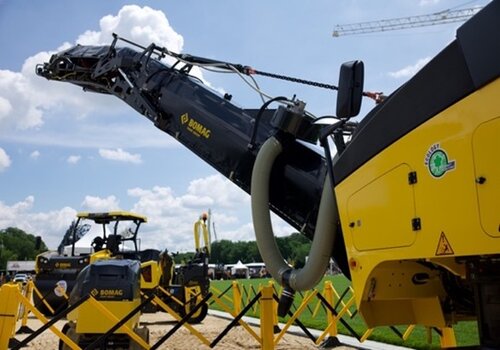Employing remote teams on construction projects comes with multiple benefits – and challenges. But with the right mitigation techniques and technologies, experts say contractors can successfully manage them.
BENEFITS OF REMOTE TEAMS ON CONSTRUCTION PROJECTS
Remote teams give construction companies flexibility in hiring, allowing them to access top talent regardless of location, says Clark Lowe, CEO of O’Connor Co., a general contractor based in Pinehurst, North Carolina, that leverages remote teams for construction projects across the country.
“Remote teams also speed up decision-making – when specialists don’t have to be onsite to provide input, projects stay on track,” Lowe says. “With the right tools, remote teams enhance efficiency, reduce overhead and improve collaboration between field teams and management.”
While most workers naturally still need to be onsite to construct a building, complete a roadway project or renovate a medical office, there is a place for remote teams on construction projects, particularly for remote project managers, says Steve Smith, director of partnerships at Bluebeam Inc., a company headquartered in Pasadena, California, that provides cloud-based construction management software.
“Construction projects can be more efficient, as remote teams can streamline communication, allowing quicker decision-making and reducing onsite bottlenecks,” Smith says. “There is less need for travel and office space, which can lead to significant savings.”
Contractors also have access to a larger talent pool because they can hire specialized experts from different locations without relocation constraints, he says. Remote teams make it easier to scale workforce needs up or down depending on project demands.
“Moreover, leveraging remote teams can improve documentation and oversight, as digital tools and cloud-based solutions allow for better tracking of project progress and documentation,” Smith says.
CHALLENGES OF REMOTE TEAMS ON CONSTRUCTION PROJECTS
Lowe says the biggest challenge is communication. Without structured updates, remote and onsite teams can fall out of sync, causing delays and rework. “Accountability is another factor – ensuring that offsite teams stay engaged and aligned with project goals requires strong leadership and clear expectations,” he says.
Communication barriers might arise between remote teams and onsite workers, as lack of face-to-face interaction may lead to misunderstandings, Smith says.
“There can also be coordination difficulties,” he says. “Time zone differences and remote work setups may create scheduling conflicts, and sometimes you simply need to be onsite to understand what is going on.”
Contractors also face potential concerns with less-than-optimal productivity, Smith says. Without direct oversight, ensuring accountability and efficiency can be challenging. This can also hinder team collaboration and erode the company’s culture, as remote work may impact team cohesion and engagement.
BEST PRACTICES IN OVERCOMING CHALLENGES OF REMOTE TEAMS
Clear communication is everything, Lowe says. Daily check-ins, project management software and live dashboards keep everyone informed, while setting expectations early and using structured reporting helps maintain accountability. A hybrid approach, where key personnel rotate between remote and onsite work, can also bridge gaps.
“Trust is non-negotiable,” he says. “Give remote team members ownership of their roles, and measure them on results, not time spent online. Investing in the right technology – such as real-time collaboration tools and drone site inspections – ensures remote teams stay as connected as those in the field.”
Indeed, digital collaboration tools within construction management software can provide contractors with real-time updates and coordination, Smith says.
To be most effective when utilizing such tools, contractors should establish clear communication protocols, including setting up regular virtual check-ins, defining reporting structures and using standardized documentation, he says. They should also ensure strong cybersecurity measures for their systems by implementing secure cloud storage, virtual private networks and data protection protocols.
With the right tools, remote teams enhance efficiency, reduce overhead and improve collaboration between field teams and management.
Clark Lowe
CEO, O’Connor Co.
Beyond technology, Smith says contractors must also set clear expectations and accountability for remote teams. They should create KPIs, progress tracking and defined roles to ensure productivity.
Other best practices in managing remote teams on construction projects that Smith recommends include:
- Invest in training and onboarding. Ensure all team members are proficient with remote collaboration tools and project workflows.
- Encourage open communication and feedback. Foster a culture where team members feel comfortable raising concerns.
- Leverage virtual reality and drones. Use technology to provide virtual site walkthroughs and real-time progress tracking.
- Promote team building and engagement. Organize virtual meetings, celebrate milestones and recognize achievements.
- Regularly evaluate and adjust. Continuously assess what’s working and make necessary improvements to remote team management strategies.
For the entire workforce to be most effective, it’s optimal to create a hybrid approach whenever possible – for both remote and onsite teams, Smith says.
From time to time, contractors should allow field workers to complete trainings, fill out reports or perform other forms of work from their homes or other remote locations, he says. On the other side of the spectrum, contractors should make sure that office workers reciprocate and spend time in the field to better understand the project challenges and build trust with those who mainly work onsite.
“In a dynamic work environment, where employee retention remains a concern, allowing for flexibility to work from home occasionally may mean the difference for some workers,” Smith says. “For some roles this may be more difficult, but it may make the difference in retaining talented workers.”
Headshots courtesy of Clark Lowe and Steve Smith.
Header image photo credit: PANG-RUM/BIGSTOCKPHOTO.COM












